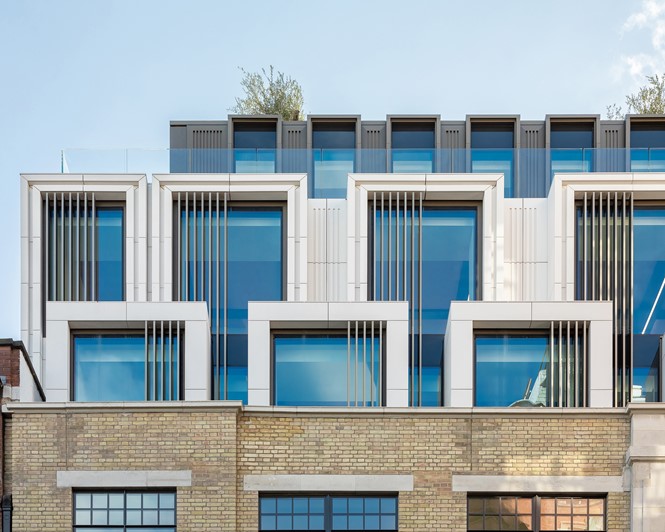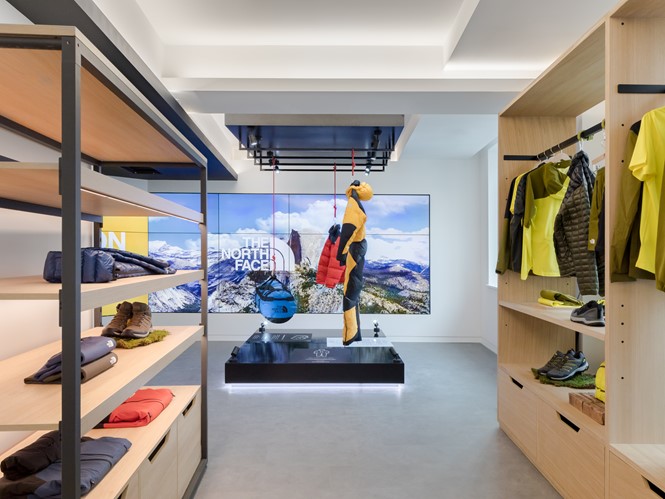Brand experience: VF Corporation
Putting B2B audiences first, VF Corporation opens the doors to its branded experience at its London headquarters. Brittany Golob explores the new space and the company’s approach to digital, sustainability and design
It’s simple enough to put together an engaging storefront for consumers. Each brand is different and thus requires a bespoke approach, however the primary features remain the same: eye-catching shop windows, access to merchandise, customer service and methods in which to pay for purchases.
The companies that comprise VF Corporation, an American conglomerate of iconic retail brands have that part down pat. Timberland uses planed woods and soft leathers. Vans features skating shoe experts and lifestyle photography. Kipling is light, bright, kid friendly and hands-on.
But, when confronted with what was to become a showcase space for buyers, investors, business partners and the media, VF had to take a different approach. It had to focus on what made its brands unique, and how they fit into the corporation’s business objectives. As sales were not the issue, the creative elements were given the space to thrive.
Establishing its London offices in the heart of Soho, VF acquired the lease to a classic, Art Deco-style building dominating a street corner just moments from the imposing frontages of Regent Street. The building itself helped inform the transformation. To blend office space with retail experiences, VF turned to the architects at Darling Associates. Damion Burrows, one of the firm’s directors, took on the project with the goal of allowing the building to “hold its own versus the façades of Regent Street. Allowing it to rub shoulders with its nearby neighbours with pride.” He wanted to reinterpret Art Deco for a modern audience, in a similar way to what New York’s Flatiron Building has achieved.
The 90 year-old, 16,000 square foot building now has sustainability at its heart. It was designed with a living garden on its roof – with olive trees, wildflowers and 360-degree views of the surrounding city. But its refreshed façade, designed in a modern Art Deco-style, was selected specifically to reduce the need for climate control. Even the windows were chosen for their ability to retain heat and cool air. With a portfolio including Timberland, Smartwool, the North Face and Napapijri, among others, VF’s brands are environmentally conscious. Most have already built this positioning into their consumer brands. Axtell House gave VF the opportunity to translate that into its corporate brand as well.
The look of the building, too, reflects VF’s desire to embrace a modern approach for heritage brands. Some of its lines, like Vans, are rooted in their history, their personalities and their positioning. But that doesn’t mean they don’t evolve. Vans has long been a brand built by its customers and it is embracing that now with a digital-first approach. Axtell House then, had to deck itself out in Deco, while recognising the modern, business audience. Elegant, ornate, geometric paneling complements brushed metal handrails and modern, light wood flooring. Its an approach that sets the tone for what VF is communicating about itself through this experience.
But Axtell House would be nowhere without VF’s brands. For the somewhat faceless corporation, its brands are its primary purpose and its primary means of communication. Through them, it is expressing its changed positioning around retail. At the Axtell House launch event, a retail trends expert said stores are having to reinvent themselves to offer learning opportunities or new experiences in order to stay relevant. VF is taking that to heart.
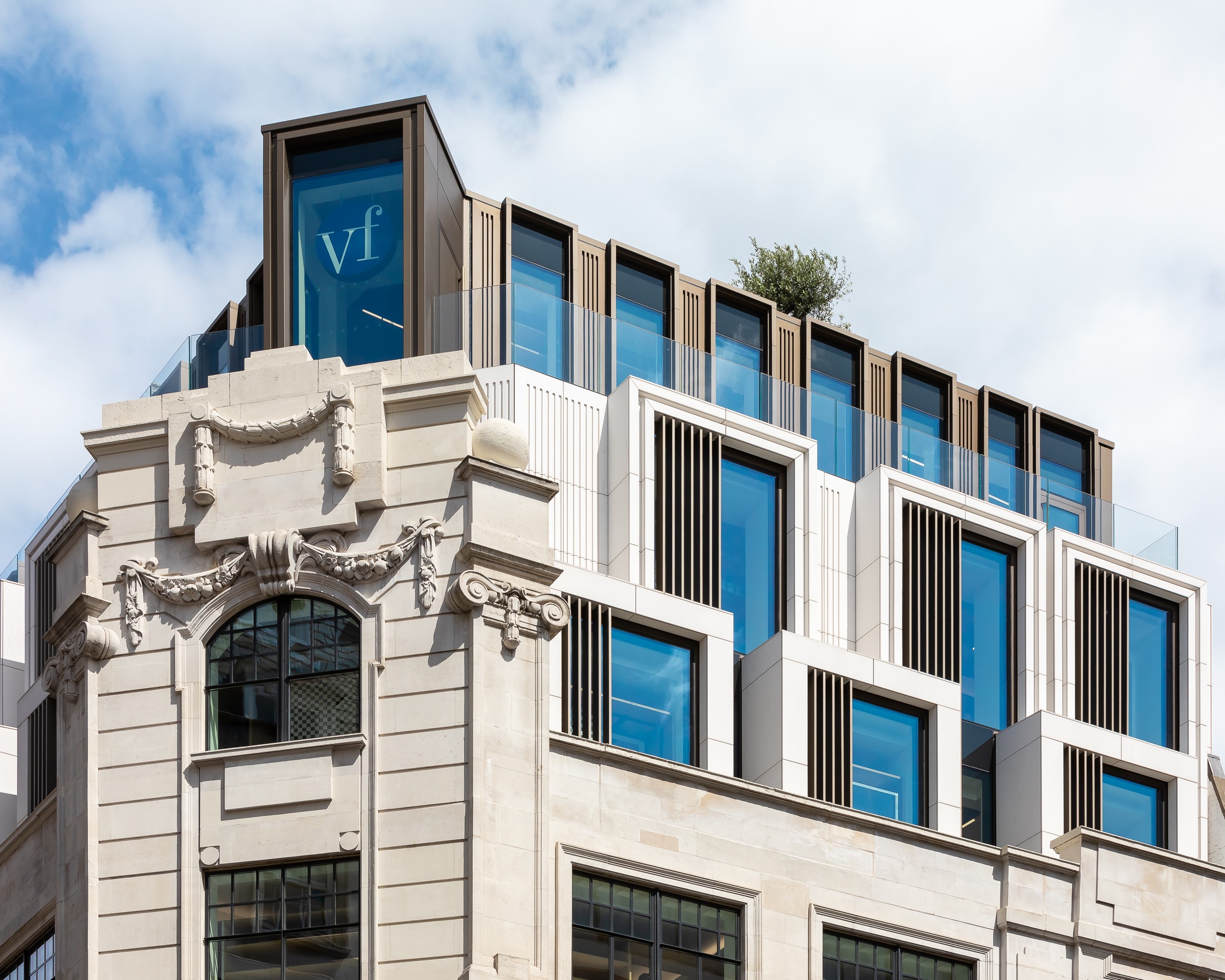
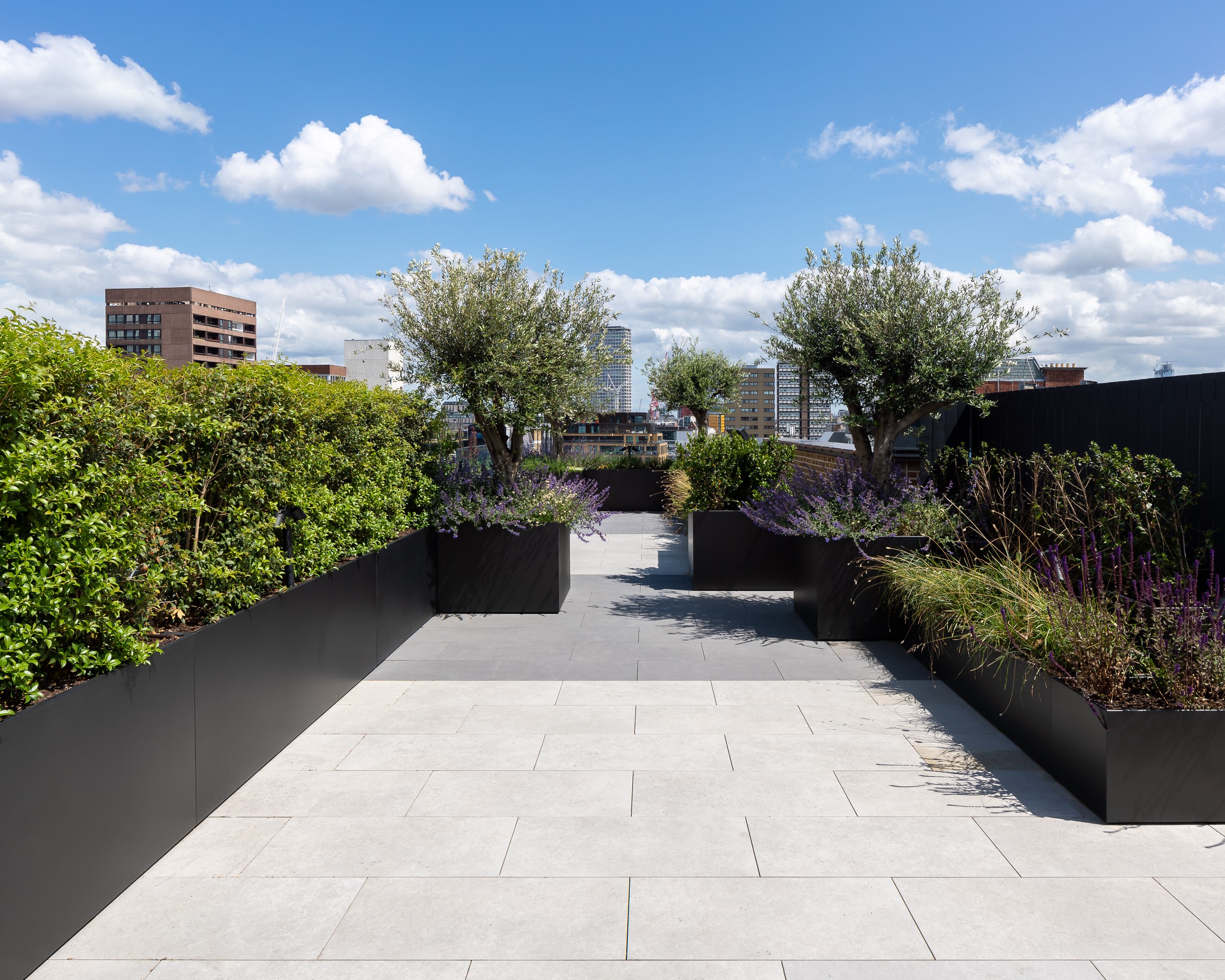
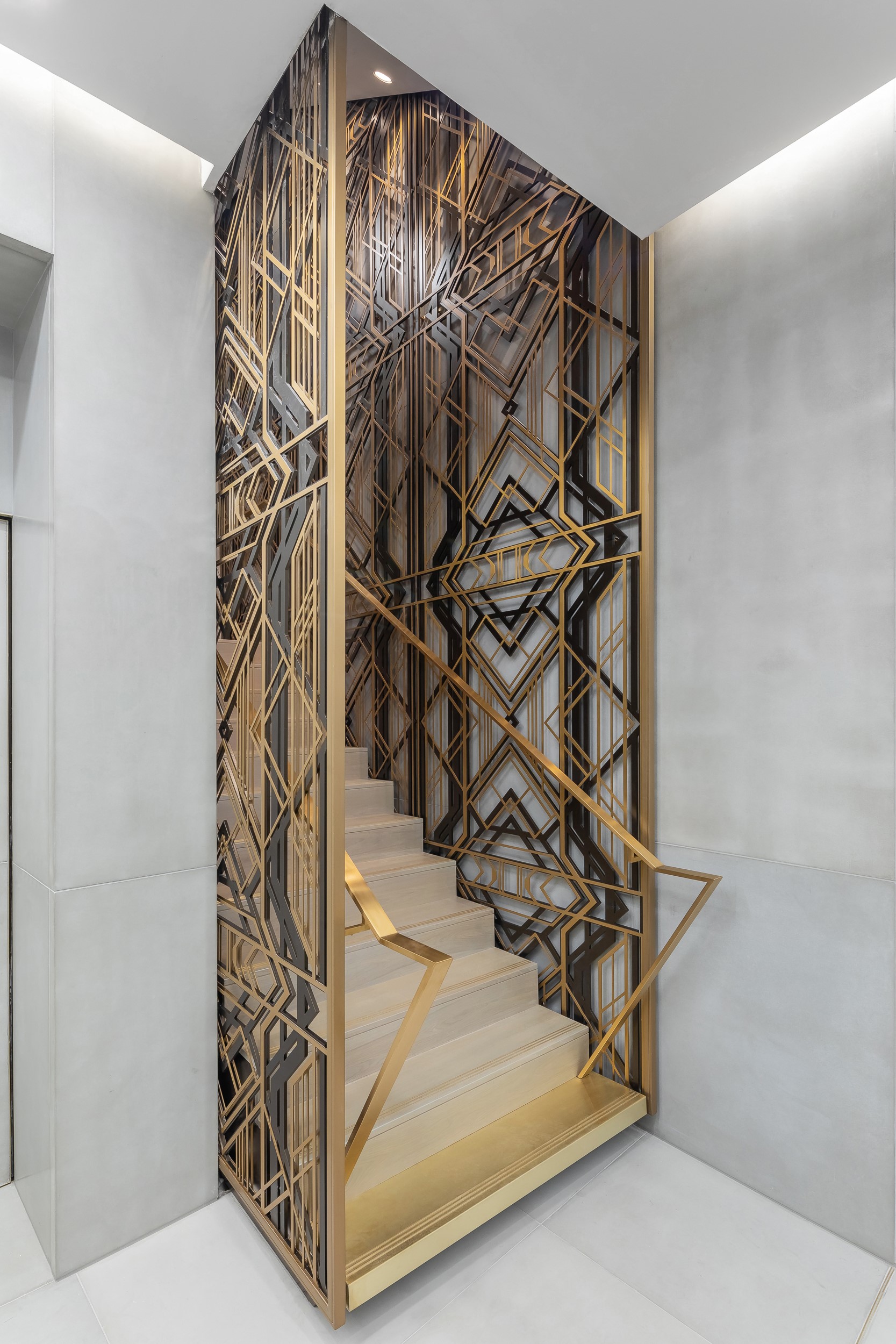
Its showcases within Axtell House are designed with two things in mind: brand positioning and digital integration. Martino Scabbia Guerrini, VF’s EMEA group president, says, “It’s a shortcut to interact physically or digitally and bring it all together and summaries it into content creation.” And it’s elegantly done, too.
Walk into the new Samsung showcase space in London’s King’s Cross, or Apple’s Fifth Avenue flagship in New York and the technology is almost overwhelming. It’s almost not about the people anymore. As retailers begin to integrate digital into the shopping experience, it has been trial and error. Some, like Burberry, are using virtual fitting rooms, sales assistants armed with iPads and the like. Others are focusing on AR window displays that put the shopper into the brand. What VF is going for is a subtler, but no less useful approach to digital. It has created an application built upon gaming techniques that ‘virtually stitch’ an item onto an individual, showing how the garment might fit, where it would gap or hang too tightly or fall too long or short. The instant fit is exciting, but for the consumer, it’s still in the prototype stage.
Where it becomes truly innovative is for internal purposes. Currently, for a product to be developed and refined, it must be prototyped a number of times. Every change requires a new rendering. And it’s all done physically, meaning the use of fabric, time and energy increases with every alteration. But, with a digital application that can showcase a product’s actual fit, fewer prototypes need to be made, resulting in a cheaper, more sustainable development process. This ‘rapid prototyping’ process, Karen Lawson, VF’s VP of innovation and product creation technology, says runs on a gaming engine and is currently in use with wholesalers and product development teams. It also offers buyers a deeper interaction with products, allowing them to understand more about an item before purchasing it, thereby leading to smarter purchasing and fewer returns from retailers.
These digital portals are available in each of the branded showcase spaces throughout Axtell House, offering buyers the opportunity to visit the space, interact with the products in physical and digital means and build deeper connections with the brands.
Guerrini says, “At VF, elevated design is at the heart of our brands’ strategy and product creation. This, along with our company’s purpose and commitment to sustainability, drives all our business choices. Having our experiential brand showcase for retail customers in the centre of one of the top fashion capitals in the world will help our brands to innovatively [sic] develop and support our company growth in the years to come, including recruitment of the industry’s best talent.”
But the space is not simply defined by its digital integration, but by its overall approach to interior design and brand positioning. Each branded space features bespoke design, developed by the Design Laboratory, based on a user-oriented approach to tell each brand’s story and immerse the visitor in that heritage in a short space of time.
The Timberland and Vans spaces are particularly good examples of this. Timberland’s space took inspiration from the theme ‘Nature needs heroes.’ The experience starts by exploring the innovations Timberland is making in terms of materials design and recycling. This blends into the heritage range – featuring the brand’s most iconic products lightly interspersed with further sustainability storytelling, the brand then explores digital integration, offering a deeper insight into its processes, products and positioning.
Vans, on the other hand, starts with heritage and lifestyle elements. The classic shoe brand has always been tied to surfing and skating sub-cultures. Its showcase opens with a seating area built like a half-pipe. Above this are screens highlighting the sub-culture ties between the brand and its audience. Photography brings modern collaborations and product developments together with the brand’s longtime ambassadors and fans.
Vans’ creative director Derek Jacobs says the brand’s priorities were exhibited in the space. It wanted to communicate its skating leadership and heritage while repositioning its icons to keep them relevant. “There’s an emotional connection to Vans,” he says. That notion was built into the space, with the ability to explore customisation options and new collaborations – elements that have been part of the brand since the beginning; even its iconic checkerboard pattern was originally a user customisation.
As versatile and multifaceted as VF is, Axtell House is as well, melding the company into a tight relationship with the space it inhabits. Kipling is a living example of this. A 32 year-old brand, Kipling has become renowned for its bags worldwide. But maintaining relevancy has required a renewed creative direction. Targeting a younger audience of adventurous weekend travellers and urban explorers, Kipling is embracing a curiosity-driven approach with a new confidence and flexible approach that sees it draw inspiration from music, retro trends, urban living and more. In Axtell House, its space is flexible, allowing for new collections to be integrated into the classic range. It offers a strong sense of the what the brand is known for, but still provides elements of surprise and intrigue.
Far from a simple retail experience, the brand showcases put storytelling and positioning first, building connections with their audiences through deeper exploration and learning opportunities. The building binds this together with a mature approach to design and sustainability that nevertheless retains the space’s heritage and character. The B2B experience of Axtell House is a gleaming showcase of design, sustainability and digital that sees the space itself communicate on behalf of VF as a corporation comprised of unique and richly developed individual brands.

